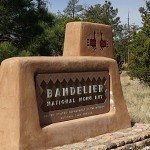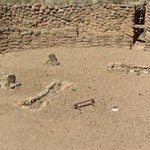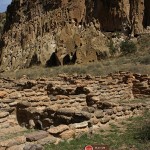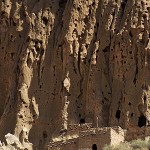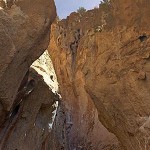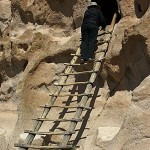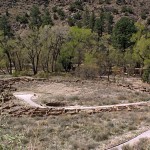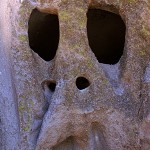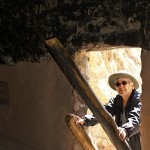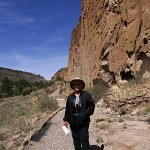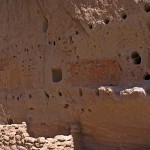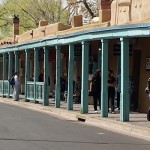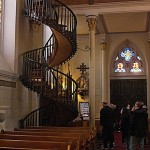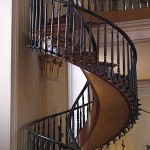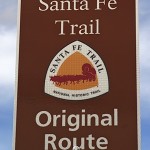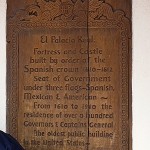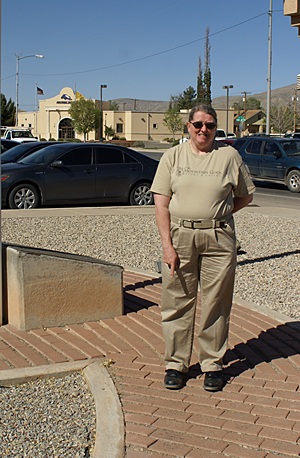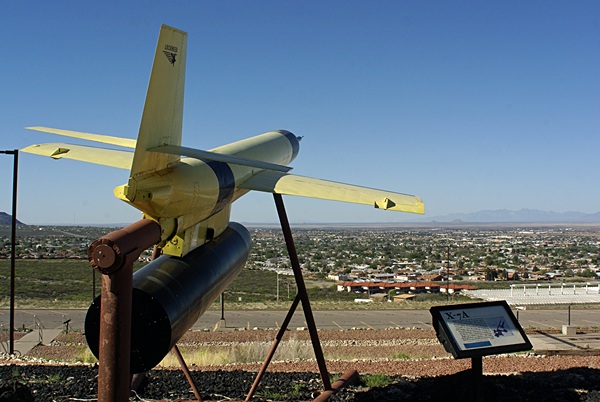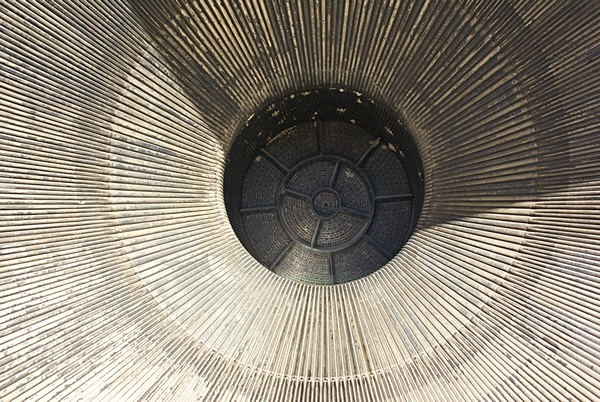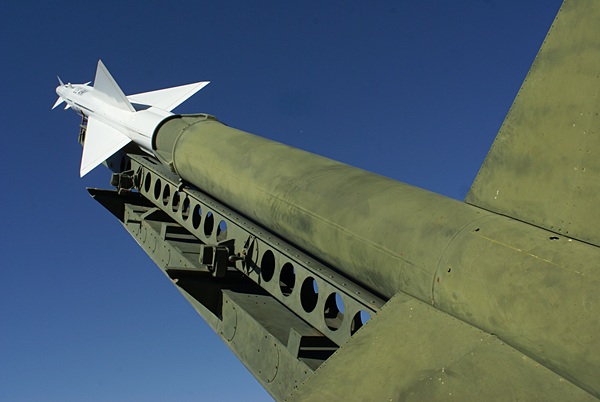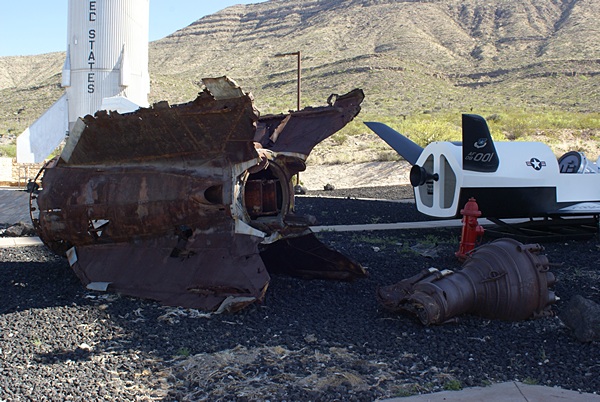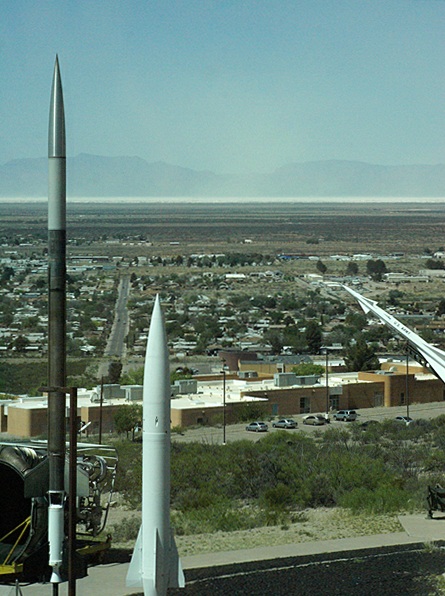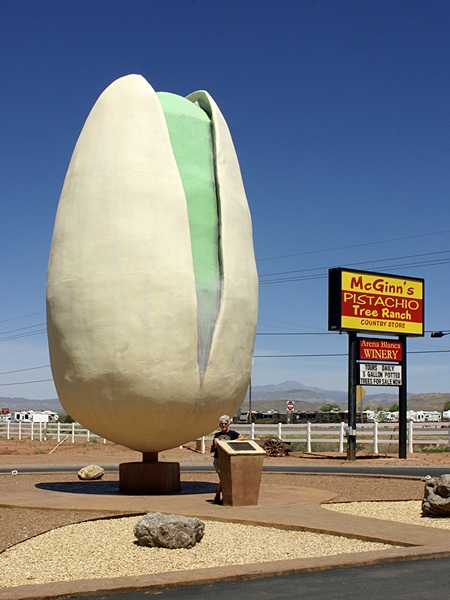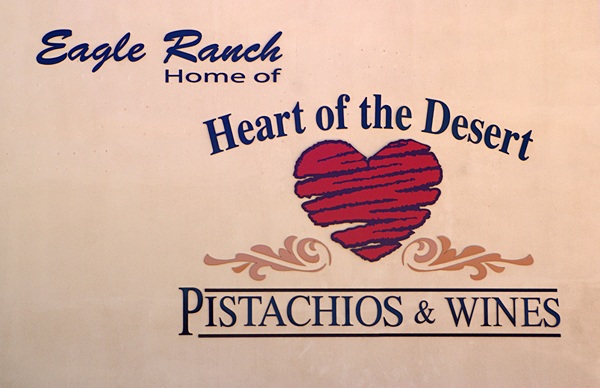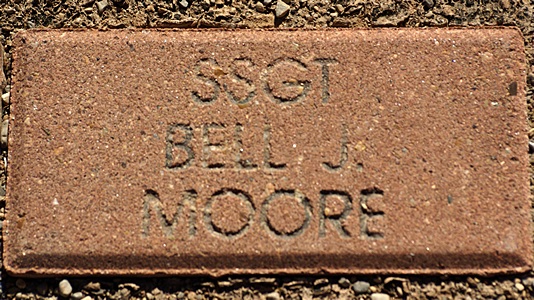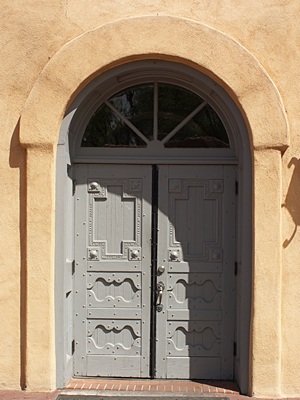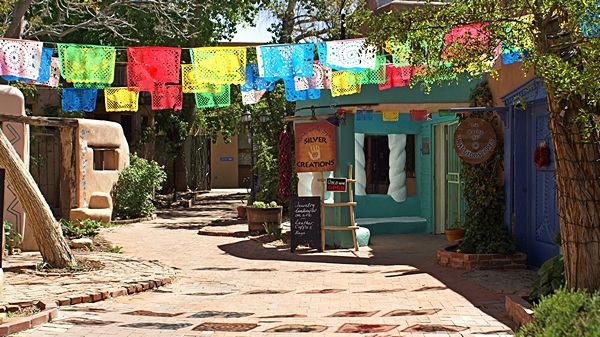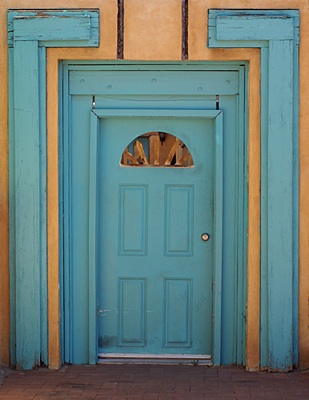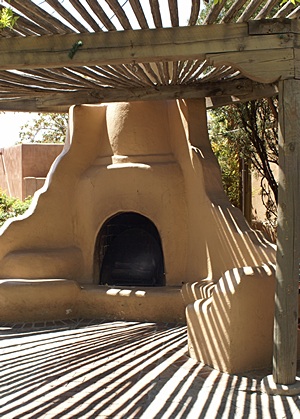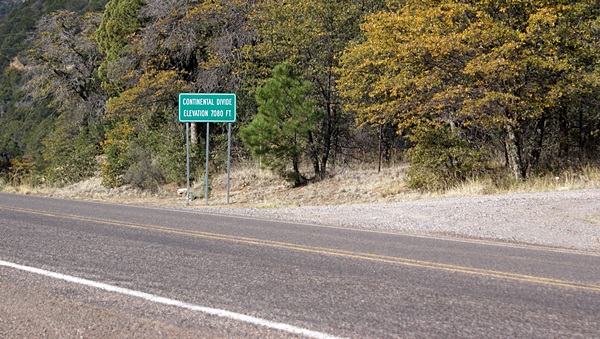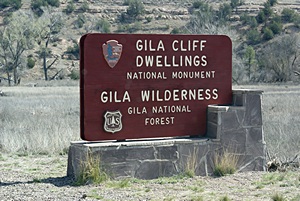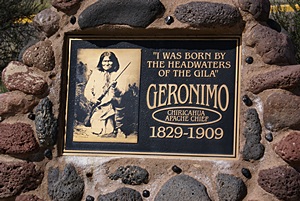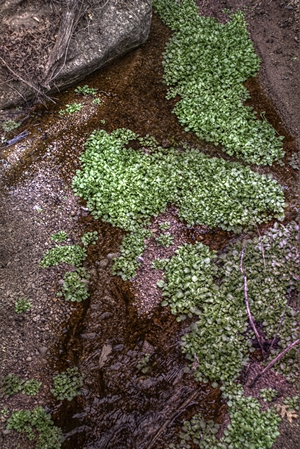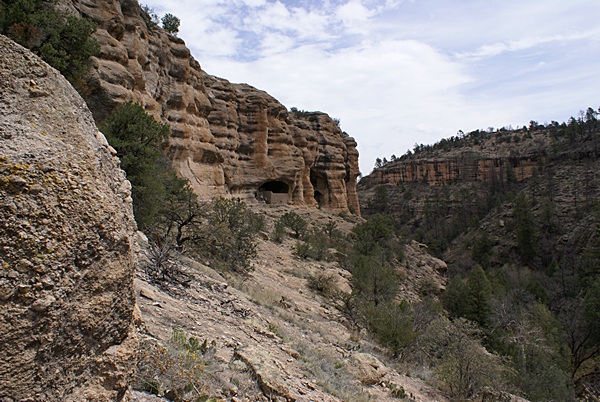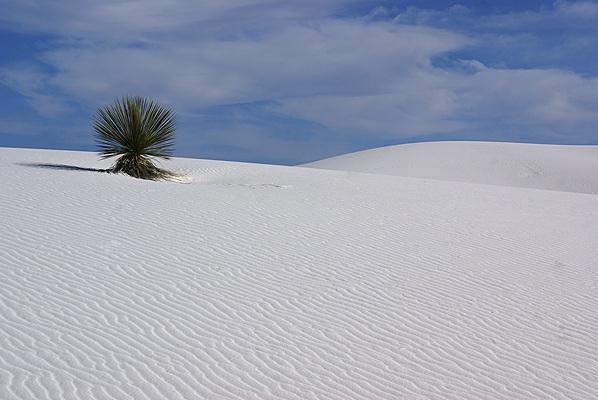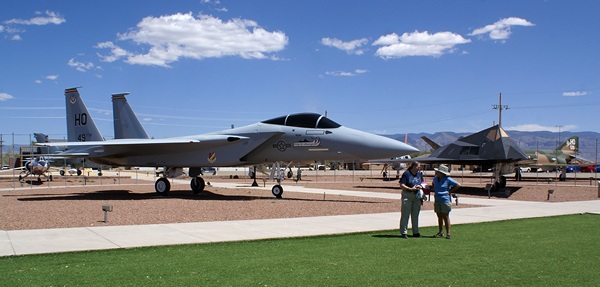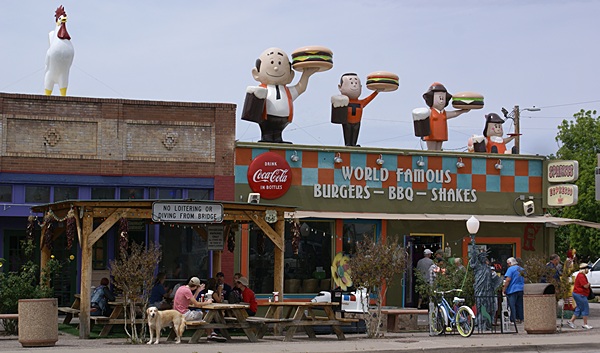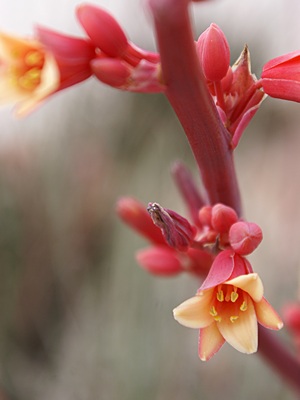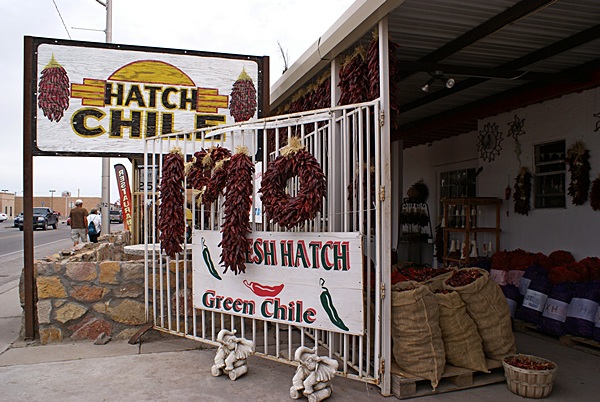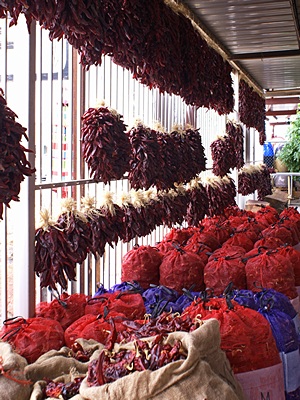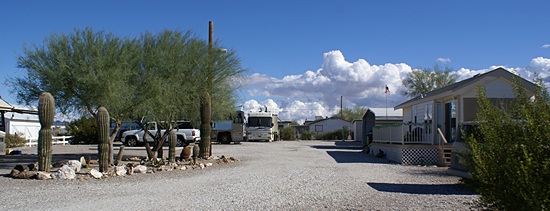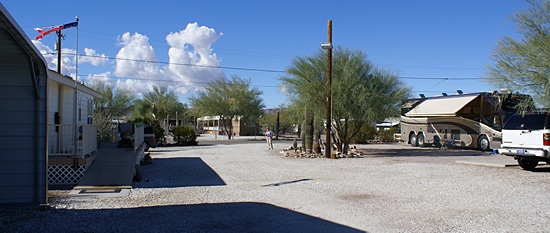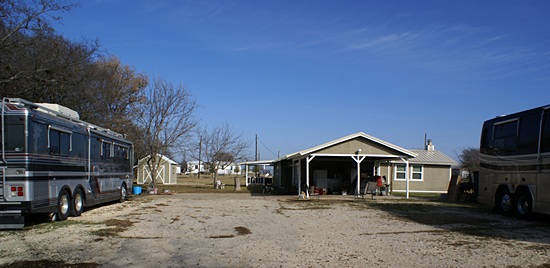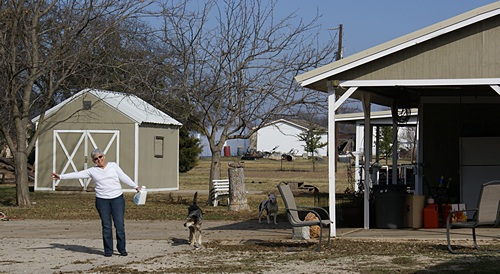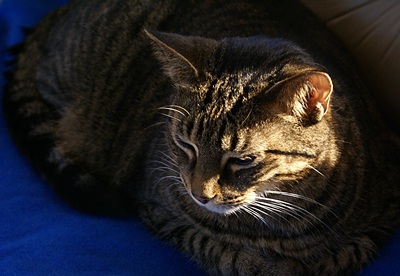[Note: There are no photos for the five days covered in this post.]
2015/04/11 (S) Relaxing Chores
We like to get up and go do things, but we also like not having to get up and do things. Today we got up when we were ready to. I used up the last four scoops of coffee beans from our first three pounds and opened the next/last three pounds; one each of Sweet Seattle Dreams, Cafe Europe, and Ethiopian Yirgacheffe. Each of these is a half regular, half decaffeinated custom blend that Jeff at Teeko’s Coffee and Tea in Howell, MI makes for us. Linda installed iOS 8.3 on her iPad while I made the coffee.
We had toast and jam for breakfast using some more of the English toasting bread we bought at Smith’s the other day. After breakfast Linda played several of her word games, including Words with Friends, online with Karen. I installed iOS 8.3 on my iPad and then worked on yesterday’s blog post and e-mailed it to myself. (It is still the easiest way for me to get it from my iPad to my laptop, which somehow just does not seem right.)
Mid-morning Linda started cleaning the coach. We have been in dusty environments for a lot of the winter, especially the last few weeks, and the coach needed a good vacuuming. We don’t vacuum as often as we would if we did not have the cats with us as the vacuum is rather loud and they are afraid of it. They do not like the vacuum cleaner at home either but they can get a lot farther away from it and have a lot more places to hide in the house than they do in the bus.
While Linda worked on the interior of the bus I got out the water softener, pre-filter, and hoses. I first connected everything so I could run water through the pre-filter to remove any sediment and then backwards through the softener to back flush the resin bed. I then connected the hoses in the normal forward flow direction and added 26 ounces of non-iodized table salt to the captive filter housing on the inlet side of the softener tank. I no longer use this housing for a filter. Its sole purpose is to hold salt for regenerating the softener. That way I do not have handle a wet filter while trying to keep it clean so I can reinstall it.
The regeneration procedure was the same ordeal it has been all winter, taking a few minutes of my time spread out over several hours. Most of that time I worked on blog posts and photos, but my work was interrupted every 20 to 30 minutes to attend to the softener. I did, however, manage to get the water coming out of the softener to finally test at 1.5 gpg TH. That should be enough softening capacity to get us home without having to regenerate the water softener again.
For dinner Linda made a barley, split pea, and lentil dish with sautéed vegetables and a hint of soy sauce. It was very tasty. We had the TV on the local PBS station and I finished my consolidated blog post and image gallery post for the week of the Escapade rally and uploaded them to our website/blog.
2015/04/12 (N) Edgewood, NM to Amarillo, TX
Today was a travel day and we normally skip breakfast and coffee on such days, but not today. I was up a little after 7 AM and we did not plan to leave until 9 AM so we had time to make, consume, and digest some coffee and toast. I turned off the electric heating element for the Aqua-Hot and turned on the diesel burner and engine pre-heat coolant circulating pump.
When we were done with breakfast we got the Dewalt air compressor out of the car and checked all of the tires on the bus and the toad. It turned out that all of the pressures were slightly higher than where I normally set them, due in part to our altitude of 6,700 feet ASL, and that was want I wanted. In driving from the Route 66 RV Park in Edgewood, New Mexico to the Overnite RV Park in Amarillo, Texas we will drop just over 3,000 feet in elevation. That, in turn, will cause the cold pressures in the tires to drop. The current cold pressures in the tires should be sufficient to allow for that, but I will check the TireTraker monitor in the morning to be sure.
By the time I finished checking the tires Linda had the interior ready for travel. We hooked up the car, set the car to be towed, switched on the bus chassis batteries and engine accessories air supply, checked the lights, turned off the Aqua-Hot burner and engine pre-heat coolant circulating pump, started the bus engine, and switched the Level Low system to drive mode. A few minutes later the chassis air system was fully pressurized and the coach suspension was at ride height. We exited our site easily, pulled out of the RV Park onto Historic Route 66 westbound, and a mile later made two right turns and accelerated onto I-40 eastbound.
Once we were underway Linda called the Overnight RV Park in Amarillo, Texas to make sure they had open sites. They did, but not many so she gave them our name to hold a pull-through site that would accommodate our bus with the car attached. Since we are just staying one night we do not plan to not unhook the car.
We knew from our maps and what we could not see to the east that we were done with the Rocky Mountains. We were now in the Great Plains and would be from here all the way through Oklahoma. Not that the terrain was flat; eastern New Mexico was rolling terrain, occasionally steep, with mesas. Not surprisingly the terrain did not change abruptly as we crossed into Texas, although the road surface and time zone did. For lack of a better, or more official, line of demarcation I consider the central time zone as the boundary of the middle-west.
While not as dramatic as the mountain west the Great Plains are a place where grasses and low brush dominate a natural landscape that is largely devoid of trees and that have a beauty all their own. The other thing we noticed as we moved east was the thickening cloud cover and occasional storm clouds and virga. Linda had checked the weather forecast so we knew there was a low, but non-zero, chance we would encounter rain while driving and/or after we got parked for the evening. We did, in fact, drive through a couple of miles of very light rain somewhere near the New Mexico / Texas border.
We only stopped once for a bathroom/stretch break and made very good time. The posted (maximum) speed limit for most of I-40 in both states is 75 MPH. Back east I typically limit my speed to 62 MPH or less if the speed limit is lower. What I have discovered out west is that the bus really likes to travel at 68 MPH turning just under 2,000 RPM and so do I, at least out here in the wide open spaces.
Linda had selected the Overnight RV Park in Amarillo for several reasons. For one, the name and description strongly suggested that this park was set up to accommodate overnight visitors passing through the area in their RVs and looking for a place to spend the night. For another, it was on the east edge of Amarillo, so we will not have to drive through town in the morning when we pull out. Finally, it was right across the street from a Pilot Truck Stop, so we did not have to make a separate stop for fuel.
We pulled of I-40 at exit 75 around 2:30 PM CDT and pulled in to the truck stop. The place was crowded with trucks but we got lucky and pulled in behind a semi that was done fueling and pulled out shortly thereafter. There was some confusion regarding the pump number so it took a bit longer than usual to top off the tank, but we were not pressed for time as our RV park for the night was right across the street. Linda settled the charge and we followed several tractor-trailers to the exit, back to the main road, and then turned north and drove the short distance up to the entrance to the RV Park. We turned in and stopped by the office where Linda got us registered. As is the case in most RV Parks we got a map of the campground with our site and entrance path marked, the login for the Wi-Fi, and the combination lock for the bathrooms. We also received information about where to go and what to do in the event of violent weather. Welcome to the Midwest and Tornado Alley.
Overnight RV Park is an older park with a lot of long-term residents, but it was not run down and had some nice, mature trees and plants. I was momentarily concerned about low overhanging branches and tight turns when we pulled in but the gravel interior roads were wide enough, and the trees trimmed enough, to make access to our assigned pull-through site very easy. I did, however, lift the tag axle to allow for the tighter turns.
We went through our normal arrival routine, got connected to the Internet, and started looking at our RV park options in the greater Oklahoma City area. We plan to stay two nights and take part of our one full day to visit my Uncle Bob and Aunt Helen who live in Norman just south of OKC. I had not contacted them, however, as our travel plans have been very fluid. Now that we were a day’s drive away I called to let them know we would be in the area. I was a bit surprised that Helen answered the phone and even more surprised to learn that Bob was in “rehab” although Helen did not say why. She did say that we could visit him so we arranged to go to their house on Tuesday morning at 10 AM, get the address/directions to the rehab facility, and possibly take Helen with us to go visit him.
I texted my sister and niece to let them know that Friday from lunchtime to dinnertime would work well for us and accommodate their availability. Linda texted our children to let them know we had landed safely in Amarillo and then texted Marilyn to share the same information. Marilyn called back a bit later and Linda filled in the details.
The RV Park options around OKC were limited, which seems to be typical of urban areas including St. Louis, Missouri. The options also seemed to be less than ideal based on reviews and expensive by our standards. In the end we decided to try the Cleveland County Fairgrounds in Norman. We sent a message via RVillage to someone who is currently there in a 42′ motorhome and inquired about the place. They wrote back and said it was fine but was near full, does not take reservations, and only has 30A electrical service. All of that was fine by us. The pluses are that it is only a few minutes from my Aunt and Uncle’s house and it is only $20 per night, so we are going to leave early tomorrow and see if we can snag a spot.
inda re-heated some leftovers for dinner, after which we went for a stroll around the RV park. We had just exited our coach and got into a conversation with our neighbors to the north. They were working on errands so after a good chat we left them to their work and went on our walk. Getting out and moving around in the cool, fresh air was just what we needed after a long day of sitting and driving and invigorated us enough to stay up until 9 PM.
2015/04/13 (M) Amarillo, TX to Norman, OK
The weather forecast did not favor travel during any particular part of the day; it was going to be rainy and windy regardless of when we left. Getting a spot at the Cleveland County Fairgrounds, however, might depend on getting there early. We targeted an 8 AM departure for our 4.5 hour, 270 mile trip. We were up at 7 AM and each had a cup of tea and a banana. We did not unhook the car last night, so all we had to do was run it through the towing procedure and it was ready to go. We pulled out of our site at 8:20 AM.
Our route today was I-40 east to I-35 south to US-77 south to East Robinson Street. All but the last 20 miles was on I-40 which mostly ran east to northeast. Winds were 15 – 20 MPH and gusty out of the northeast the whole way. That meant I almost always had a headwind component and often had a crosswind component. The headwind requires the engine to work harder so I set the cruise control at 64 MPH instead of the 68 MPH I ran most of yesterday. The crosswind component meant I had to actively work the steering and the lower speed made that more comfortable as well.
Most of the trip was through rural countryside with good road surface and light traffic. We encountered a few construction zones but there was no work being done due to the weather. As we approached the Oklahoma City metropolitan area traffic became much heavier, as expected, but the highways had more lanes and everything seemed to move along just fine. In particular I-40 and I-35 always had at least three lanes allowing me to stay in the center, away from entering traffic, and move to the left or right as needed for an exit ramp. The whole drive would have been easier without the rain and constant fiddling with windshield wipers, but I was always able to see well enough to maneuver safely, it was just more work and bit more stressful than normal. I seem to handle urban road systems OK; it’s just not my favorite thing to do.
The Cleveland County Fairgrounds was easy to find and easy to access. As soon as we pulled in we could see where the RVs were parked. I pulled up out of the way while Linda called the Fairgrounds office. She was told to go ahead a find a place to park and then register at the kiosk or in Building G. I pulled up into the gravel parking area that had the RVs backed along two sides, like an “L.” One leg of the L was paved and the other was grass/gravel. We noticed one empty site in the paved area so I pulled around in front of it (so no one else could take it) while we unhooked the car. (When camping in a no-reservations, first come, first served campground you have to stake your claim to an empty site.) Linda moved the car out of the way and then spotted the rear end of the bus while I repositioned it and then backed it into site #9. We have been towed out of two fairgrounds at the end of rallies where it rained so we were glad to get this paved site.
The sites here are all full hookup with 30 A electric and include usable Wi-Fi for $20/night. That is a much better deal than anything else we could find in the OKC area, and is also the closest place to where my aunt and uncle live, so it was a great find. We probably won’t use the fresh water or sewer connections and the 30 A service will be OK. Apparently there are also some 50 A sites but we did not need that much power and did not want to take the time to see if one of them was open. Given forecasted high temperatures that will barely reach 60 degrees F we will not need our air-conditioners. As for heat, we will use our Aqua-Hot in diesel-fired mode for domestic hot water and space heating, if needed.
Once we had the power connected and got settled in I made a pot of coffee while Linda made roll-up sandwiches for lunch. She then checked us in to the Fairgrounds on RVillage and made our reservation for the Red Barn Rendezvous RV Park near Edwardsville, Illinois starting on Thursday. We will be in the St. Louis, Missouri area for four or five nights visiting family before pushing on to Twelve Mile, Indiana. She then researched places to stay near Joplin and Springfield, Missouri for Wednesday evening.
While Linda was doing all of that I finished up yesterday’s blog post and started working on this one. I then logged-in to RVillage. There are three other RVillagers checked in to the CCFG so I posted to the home feed and to the park feed to see if I could make contact with any of them. One of them (Hollywood Bob) is also a member of the SKP Photographers BOF which Linda and I help run. (I am the owner/leader of the RVillage Group.) I sent him a friend request and then a personal message.
The rain let up not long after we arrived at the Fairgrounds but the wind continued, with gusts occasionally rocking the bus. The bus is fairly massive but also has a lot of surface area and sits on air springs. We do not have leveling jacks, so strong/gusty winds can, and do, rock the bus.
Hollywood Bob and his girlfriend Barb walked by so I went outside to chat with them briefly and we arranged to walk over to a local coffee shop at 8 AM tomorrow. I then spent the late afternoon and early evening editing the text for my March 13th blog post on our visit to the Sonoran Desert Museum west of Tucson and then worked on selecting photos for the post. Somewhere in there we took a break and went for walk around the Fairgrounds. It is not a large facility but has nice buildings and grounds.
Linda heated up the last of the barley and vegetable leftovers and steamed some halved Brussels sprouts and finished them with a White Peach Balsamic Vinegar Glaze from the Queen Creek Olive Mill near Arizona City, Arizona. Yum. After dinner we turned on the front TV and tuned in PBS to watch Antiques Roadshow. I finished selecting and processing photos for the March 13th post around 11:30 PM but did not upload it
2015/04/14 (T) Bob and Helen
I was up at 6:30 AM and uploaded my blog post for March 13th. We had spent that day at the Sonoran Desert Museum west of Tucson, Arizona and photographed the sunset from nearby Gates Pass. The post was brief (by my standards) but I put over 30 photos in an image gallery.
At 8 AM we walked over to Hollywood Bob and Barb’s rigs, met up with them, and then walked the short distance to the Dora Marie Bakery and Coffee Shop just across Porter Avenue from the Cleveland County Fairgrounds. We sat there conversing over coffee until 9:45 AM, mostly about RVs and RVing as that is generally the first and easiest conversation to have with new friends. I already knew from a brief chat with Bob yesterday that both of them are members of the Escapees RV Club and that Bob is a member of the SKP Photographers BOF. Bob is also a Freethinker and knew that we were as well from our RVillage Profile. We found out over coffee that they are both members of the WINs (Wandering Individuals Network) and LoWs (Loners on Wheels) which are independent groups for single RVers. As we were walking back to our rigs we agreed to get together for SKP happy hour at 4 PM.
Our main reason for being in Norman, Oklahoma was to visit my Uncle Bob and Aunt Helen. Uncle Bob earned a Ph.D. in micropaleontology over 60 years ago when Ph.Ds. were less common than they are now. He moved to Oklahoma after finishing his degree and did extensive work on the Arbuckle Mountains. A Google search on “Robert O. Fay” produced a lot of hits referencing his published work. He was attached to the University of Oklahoma at one time and that is what brought them to Norman.
Bob just turned 88. He and Helen have been married for 49 years but never had children. Helen had one son, Scott, from a previous marriage. Scott married Linda and they had two children, Tiffany and Philip. Scott passed away a while back but Linda still lives in Norman and teaches in OKC. Tiffany and Philip and their families also still live in Norman.
I last saw Bob and Helen four years ago on the drive back to Michigan from Livingston, Texas where I had picked up our Honda Element from Dennis and Carol Hill. Helen was having problems with her back at the time but Bob was as sharp as I remembered the last time I saw him 26 years earlier while returning from a trip out west with Brendan. All of our memories of that visit were a bit vague but my recollection is that Meghan and my sister, Patty, met us there so Patty must have driven Meghan to OKC from St. Louis, Missouri.
When I called on Sunday to let Bob and Helen know we would be in the area I talked to Helen and found out that my uncle was in a rehabilitation facility not far from the house but she did not say why. When we arrived at their house at 10 AM this morning we were greeted by Tiffany, Brandy (Philip’s wife), and Helen who was up walking around and sharp as ever. We visited briefly and then followed Tiffany and Helen over to the rehab facility.
Uncle Bob is in the facility recovering from a persistent pneumonia, which was treated with an antibiotic to which he was allergic, but he also has Parkinson’s. He is still coherent but the decline in both his physical and mental condition was striking. I was not shocked by that, however, and only briefly surprised by virtue of not being fully prepared. We had a conversation nonetheless, and Bob asked, and talked, about family and genealogy which became his research passion along with geology. Tiffany took a cell phone picture of Linda and me with Bob. She had to get back to work so she took Helen home while Linda and I stayed a bit longer to chat with my uncle.
Bob was tired, dozing on and off, and it was getting close to lunchtime. Staff also needed to check on Bob so we took our leave. Although we will be back this way in future years I had the strong sense that Uncle Bob is not going to improve going forward and this may be the last time I get to see him. It was not quite the meeting I had envisioned, but I was glad for what we had. My dad will be 90 in June and cannot travel very far from his home so I don’t see any way he and his brother will ever meet again. There is always a final everything but it is usually only clear in retrospect. Such is life.
Before Tiffany and Helen left Tiffany called her mom (Linda) to see if she could be available to get together after work this evening. Linda said she could rearrange some things with her brother and would love to meet for dinner. We discussed meeting at the house and going out to dinner from there.
Tiffany invited us to stop by her school, which is just down the street from the Fairgrounds, so we did that right after lunch, which consisted of a couple of tofu hotdogs wrapped up in soft tortillas with mustard and relish. Not WFPB but definitely vegan and definitely tasty. Tiffany gave us a tour of her school and we got to meet Cody, her significant other, who also works at the school. She had talked to her mom (Linda) and Helen and they decided that we would all be more comfortable and better able to converse at the house. We explained how we eat and Tiffany said she and Brandi (Philip’s wife) would take care of bringing in food and make sure there were items for us.
I spent most of the afternoon working on blog posts but took time out to check the pressures of the two front bus tires. I thought I would have to adjust all of them now that we have descended to 1,200 feet ASL, but the front tires were still close to one another and above the minimum required pressure, so I did not get out the compressor. By 3 PM I was feeling the need for a nap and snoozed for an hour.
We walked over to Barb and Hollywood Bob’s rigs at 4:30 PM. We were going to do SKP happy hour at 4 PM but we were not sure we could carry glasses of wine around the Fairgrounds so we went empty handed. The Farmers Market opened at 4 PM so Bob, Linda, and I walked over to check it out while Barb started preparing their dinner. They had to be at a dance event at 6 PM and we needed to be at Uncle Bob and Aunt Helen’s house around the same time.
Brandi has been Uncle Bob’s primary caregiver when he is at home and she brought him from the rehab facility to the house for the evening. There was a houseful of people with laughter and energy and it was nice to see Uncle Bob and Aunt Helen surrounded by so many people who obviously love them and care about them. Dinner was salad greens, vegetables, fresh fruit, sandwich fixings, and deserts and there was plenty for us to choose from. Here’s how the family fits together:
- Bob is my father’s younger/only brother (by two years).
- Helen had one son, Scott Pelton, from a previous marriage.
- Scott married Linda and they had two children; Tiffany and Philip.
- (Scott passed away some years ago.)
- Tiffany has three girls (young ladies); Alexis, Brianna, and Caitlin.
- Brianna has a son, Liam, who is Bob and Helen’s great-great-grandson.
- Philip married Brandi and they have three children; Cassidy, Cheyenne, and Danika.
We stayed until almost 9:30 PM and had a great visit that ended with a discussion about Linda and her three grand-daughters coming to Michigan for a visit sometime. Tiffany texted me the cellphone photo she took of Linda, me, and Uncle Bob at the rehab facility this morning. Caitlin set up a camera and took photos of the entire group. When we got back to our rig I replied to text messages and provided our e-mail address and home phone number to Helen and Tiffany.
2015/04/15 (W) Norman, OK to Carthage, MO
There is always way more to do in any given area than there is time to do it, and the greater Oklahoma City area, including Norman, is no exception to that. But our presence here proved to be the catalyst for a large gathering of people to whom we are related by marriage through Helen, my only Aunt, and only by virtue of her being married to my only uncle, Bob. While it would have been nice to visit longer after last night’s gathering it would have been anti-climactic.
Through the serendipity that RVillage makes possible we also made the acquaintance of Barb and Hollywood Bob at the Cleveland County Fairgrounds. As much as we would have liked to have coffee with them again this morning, we don’t usually have our morning coffee on travel days and wanted to be on the road by 9 AM.
Linda had been checking the weight restrictions on the roads in our home county and noted yesterday that they will be lifted on the 16th. That means we have a green light to return to our house whenever we want to. We already have plans to spend four nights near St. Louis, Missouri and visit family, and at least a couple of nights in Twelve Mile, Indiana visiting Butch and Fonda with whom we started this southwestern adventure on November 30th, 2014. We will spend our final night at the Camp Turkeyville RV Park so we can dump our holding tanks before arriving home.
All of which is to say we had over 600 miles to travel from Norman to St. Louis, which is two day trip for us, with a reservation at an RV Park in Edwardsville, Illinois starting Thursday afternoon and arrangements to visit with family on Friday, Saturday, and Sunday. Linda researched possible intermediate locations to split the distance roughly in half and found the Coachlight RV Park on I-49 one mile north of I-40 near Carthage, Missouri.
We did not take the time to buy an Oklahoma Turnpike pass and decided not to take I-44 northeast out of OKC. From the CCFG we headed west on Robinson Street back to US-77 north, merged onto I-35 north, and then exited onto I-240 east. Somewhere east of OKC I-240 ended and merged into I-40. As urban highways go it was an easy exit from the greater OKC area. We stopped at a rest area just before crossing the Oklahoma/Arkansas border and took a short lunch break, having vegan cold cut rollup sandwiches.
We continued east on I-40 to Fort Smith, Arkansas and then headed north on I-540, which has been re-signed I-49, through the Boston Mountains toward Fayetteville and Bentonville, the corporate home of Wal-Mart. I-49 did not continue all the way into Missouri and became US-77 as it passed through a narrow valley and small towns. A few miles into Missouri the road became I-49 again. We stayed with I-49 up to where it joins with I-44 east near Joplin, Missouri. About 10 miles later I-49/US-77 split off to the north and one mile later we exited, crossed over the Interstate, and pulled into the Coachlight RV Park.
The weather was overcast with occasional drizzle for the entire trip but it was a beautiful drive nonetheless. Eastern Oklahoma is green and rolling and northwest Arkansas adds small mountains to that topography. The bus ran well all day including the steepest grades.
The Coachlight RV Park is located behind the Coachlight RV Dealership with very easy access. Linda got us registered but then we had to wait quite a while for someone to move the motorhome in front of us. Again, we were given instructions on where to go and what to do in the event of extreme/violent weather. The Park is built into a north-facing slope with wide paved roads behind an RV dealership of the same same. The RV dealership was the emergency shelter. Most of the sites are pull-through except along the two outside edges. All of the sites are wide, long, and level gravel with full hookups including cable TV and Wi-Fi. The Park has its own well with a water softener so the water at the sites is very soft. The Park allows customers to wash their rigs so we got out the hose, spray nozzle, and long-handled soft brush and rinsed off the car and the bus as best we could.
We went for a walk around the Park to stretch our legs and stopped by the office to check out the meeting room. There is a small RV rally here and we got to see the meeting room which was very nice. For dinner Linda made a macaroni and mushroom dish with onions, garlic, and kale followed by red grapes. Very tasty. We watched a few TV shows and called it a day.
